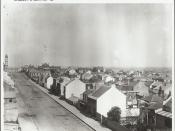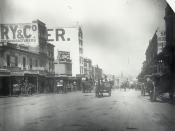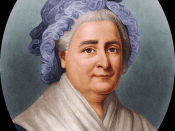A reader reading Albee will not fail to notice tricks of language in operation; a more interesting analysis is to consider how the characters themselves are aware of language, of reading and being read, as a text, by other characters. Albee's plays, Who's Afraid of Virginia Woolf? and Three Tall Women, show the obsession with language and its functions, both good and terrifying. Who's Afraid of Virginia Woolf? is as much about censorship, the attempts to limit speech, as it is about playacting and generating through language. Three Tall Women, as a memory play, exposes language as the primary form of discovery. In both works, the characters engage language in ways that may begin lightly though never without meaning.
Who's Afraid of Virginia Woolf?, to begin with, takes its title from a pun, seemingly not a very meaningful one, unless we read it as a reversal of the traditional children's tale and acknowledge that a female has substituted for the male monster.
But if we accept the idea of the pun as betraying "the hidden wish of words," then we are thrown into a world where every verbal choice matters whether we understand it or not. Indeed, by entering the house with George and Martha, we enter exactly this world, and the word play begins instantaneously and relentlessly. A faintly remembered, unanchored phrase enters Martha's mind - "What a dump!" - and she will not rest, or let George rest, until she locates it in time and place (3). A conflict immediately opens based on how each perceives the other's mode of communication at the party from which they are returning. Martha accuses George of passivity, of sitting around and talking rather than mixing, and George counters, "Do you want me to go around all night braying...


